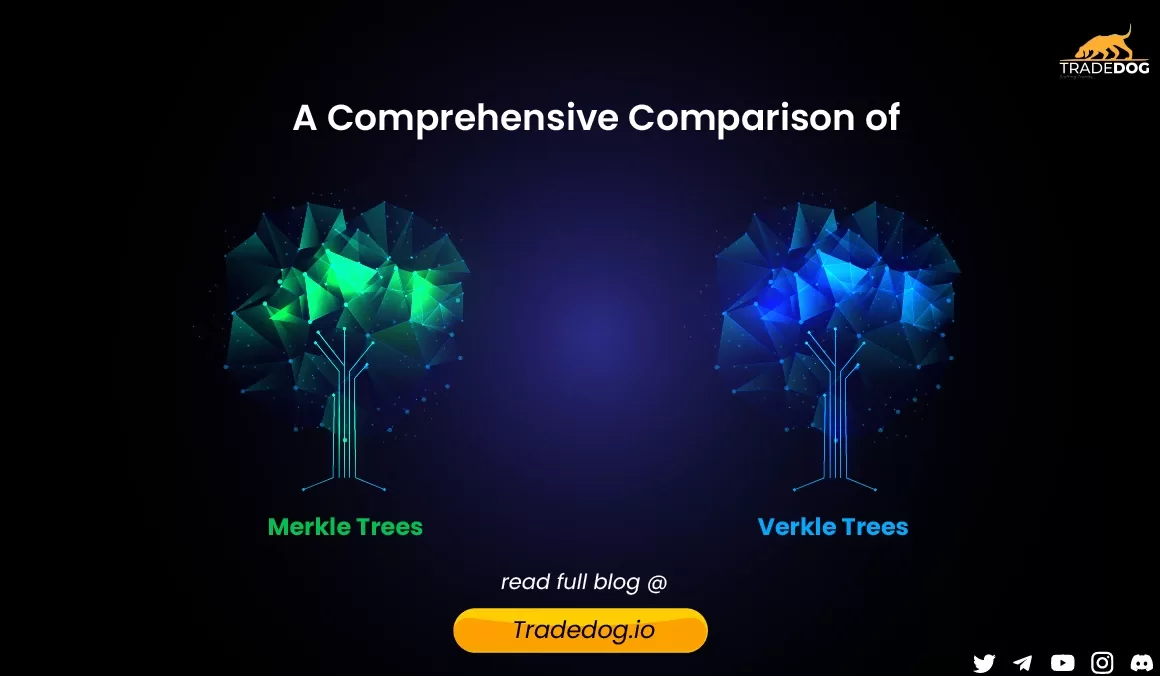Quick Links
If you have ever worked with cryptocurrencies, you may have encountered the terms “Merkle Trees” and “Verkle Trees.” While they may sound similar, they have some notable differences. In this article, we will delve into the details of each type of tree, their functioning, and which one is better suited for specific use cases.
What is a Merkle Tree?
The Merkle Tree is a captivating and intricate cryptographic data structure that was created by Ralph Merkle. To construct a Merkle Tree, individual data blocks undergo a sequence of hash operations and then merge into pairs until only one hash value is left, known as the Merkle Root. This technique results in a sophisticated method for verifying data integrity, as the Merkle Root can be compared to a trusted value to efficiently confirm data authenticity. The importance of Merkle Trees in guaranteeing data security and integrity is demonstrated by their widespread usage in blockchain technology.
How Merkle Tree Works
Merkle Trees break down data into smaller chunks and then hash those chunks. The resulting hash values are then paired and hashed again, creating a new set of hash values. This process continues until only one hash value is left, which is the Merkle Root. This root can be compared with a trusted value to verify the integrity of the data. Because the tree structure allows for efficient verification of data, Merkle Trees are widely used in blockchain technology.
Use Cases of Merkle Tree
Cryptocurrency transactions
Merkle Trees are widely used in cryptocurrencies such as Bitcoin and Ethereum to ensure the integrity of transactions.
Data verification
Merkle Trees can be used to verify the authenticity of data by comparing the hash of the root node with the known hash value.
File synchronization
Merkle Trees can be used to synchronize files efficiently by comparing the hash of the root node of two different trees to identify differences in the file contents.
What is a Verkle Tree?
A Verkle Tree is a type of Merkle Tree proposed by Zcash developers as a more efficient alternative. Verkle Trees use a similar structure to Merkle Trees but with a critical difference: the intermediate nodes in the tree structure are compressed into a single value, reducing the tree’s overall size. This allows for faster verification of data and reduced storage requirements.
How Verkle Tree Works
Verkle Trees break down data into smaller chunks and hash those chunks. The resulting hash values are then compressed into a single value for each tree level rather than having separate values for each pair of nodes. This allows for more efficient verification of data and reduced storage requirements.
Use Cases of Verkle Trees
Optimized state verification
Verkle Trees can be used to optimize state verification in blockchain systems by reducing the amount of data needed to be stored and verified.
Data authentication
Verkle Trees can be used to authenticate data by creating a compact proof of inclusion, which can be verified efficiently.
Secure multi-party computation
Verkle Trees can be used to facilitate secure multi-party computation by allowing multiple parties to verify each other’s data without revealing sensitive information.
Comparison of Merkle Vs Verkle Trees:
| Criteria | Merkle Trees | Verkle Trees |
| Efficiency | Efficient, but proof size grows with tree height | Designed to be more efficient with compact proofs |
| Security | Highly secure with cryptographic hash functions | Highly secure, but vulnerable if the hash function is compromised |
| Complexity | Simple and easy to implement | More complex than Merkle Trees, but still manageable |
| Privacy | Limited privacy due to the revealing of the full branch path | Improved privacy with the ability to reveal only a subset of branch paths |
Conclusion
Merkle Trees and Verkle Trees are essential cryptography and blockchain technology data structures. While Merkle Trees have been widely used for many years and are well-understood, Verkle Trees offer a more efficient alternative to save on storage space and improve verification speed. Ultimately, the choice between the two will depend on the specific use case and the requirements for storage, verification speed, and security.
If you’re interested in staying up-to-date with the latest research and analysis on topics like Merkle Trees vs. Verkle Trees, consider signing up for more articles on tradedog.io, which publishes informative content.
With its team of experienced professionals and its commitment to producing actionable insights, it’s a valuable resource for anyone who wants to stay ahead of the curve in today’s rapidly evolving business landscape!
Glossary (Text Specific):
- Hash Value
“Hash Value” refers to the output of a cryptographic hash function. A hash function is a mathematical algorithm that takes in data of any size and produces a fixed-size output, known as a hash value.
- Intermediate Nodes
“Intermediate nodes” refers to the nodes in a tree structure that are not the top-most root node or the bottom-most leaf nodes. These nodes are in between the root and the leaves and are often used to represent the structure or hierarchy of the data being organized in the tree.
- Multi-Party Computation
“Multi-party computation” refers to a cryptographic technique that enables multiple parties to jointly compute a function or solve a problem while keeping their inputs private from each other.
- Tree Height
The “tree height” refers to the number of levels in the tree. Each level in the Merkle Tree represents a set of data blocks that are being hashed together.
- Cryptographic hash function
Cryptographic hash functions are mathematical algorithms that take in input data of any size and output a fixed-length string of characters, known as a hash value or message digest.









